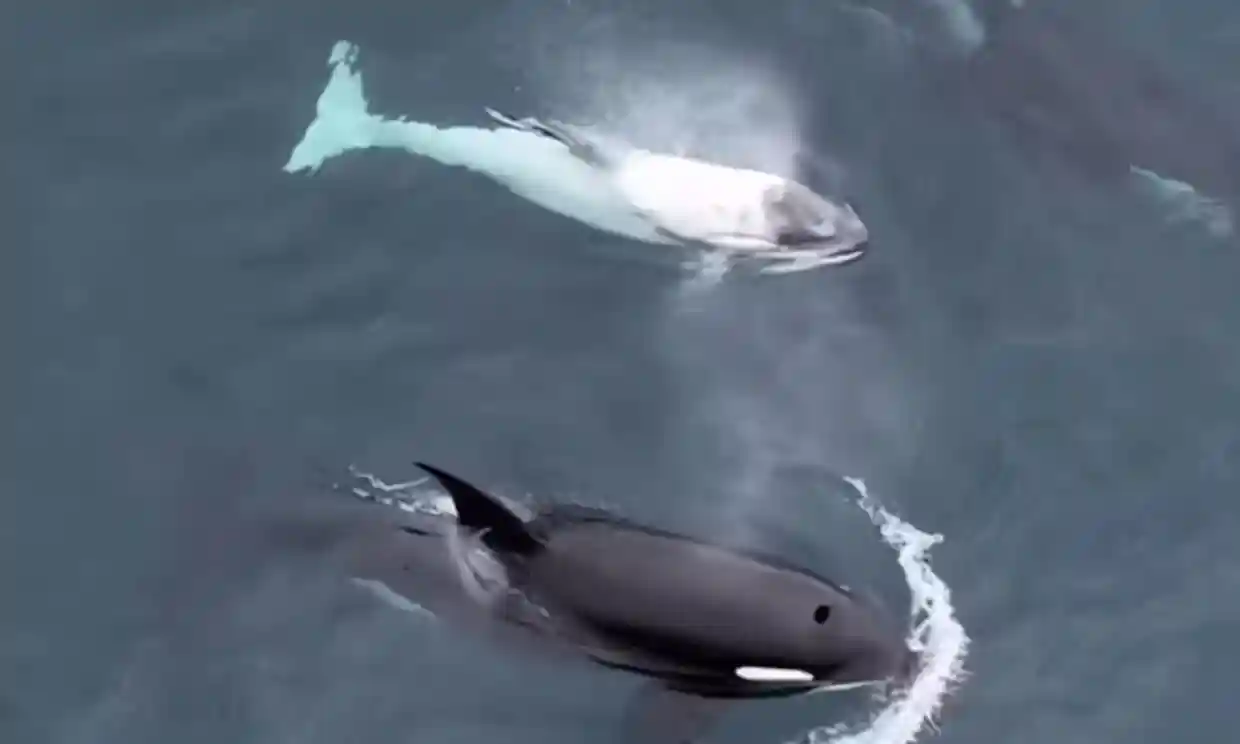The three-year-old white orca calf was first spotted, by a Long Beach whale-watching business, which then informed Newport Coastal Adventures of the sighting.

A rare white orca calf was discovered off the coast of southern California. In a video taken on Monday by Newport Coastal Adventures, a whale-watching tour provider, the white calf could be seen swimming with six other orcas close to Newport Harbour.
The three-year-old white orca calf was first spotted, by a Long Beach whale-watching business, which then informed Newport Coastal Adventures of the sighting.
With only a few hours’ notice, we loaded three boats for a special trip and travelled 50 miles before we located the CA216 pod, according to the caption for the video of the calf that Newport Coastal Adventures posted online.
With the exception of its head and a greyish dorsal fin, the calf is entirely white. Due to its “unusually light skin…[the] result of a rare genetic condition,” the tour group gave it the name “Frosty.”
As the orcas swam up the coastline until dusk, passengers on the whale-watching tour were able to observe them for more than two hours, boat captain Delaney Trowbridge told media.
He claimed that the pod made several approaches to the boat. White orcas are not excluded from their pods, as some people may believe, according to Danny Groves, a spokesperson for Whale and Dolphin Conservation. They have full acceptance, he declared.
The outlet was informed by Mark Girardeau, a representative of Whale and Dolphin Conservation, that this specific pod has been seen as far south as Mexico and as far north as Canada. Experts claim that a number of well-known conditions can make some animals, including orcas, appear white.
Leucism is a condition where the skin’s pigmentation is paler. The second condition is Chediak-Higashi syndrome, an inherited immune disorder that can partially result in albinism. Leucism, a rare condition in orcas, is what’s ailing the California orca.
According to Luke Rendell, a biology lecturer at the University of St Andrews’ sea mammal research unit, “there are many reasons such patterns occur, but genetics is a large factor.” “Almost no pigment is present in albinism… In addition, leucism, which Frosty has, is a partial loss of pigment brought on by an error in the development of skin cells. Therefore, leucism may have both developmental and genetic causes.